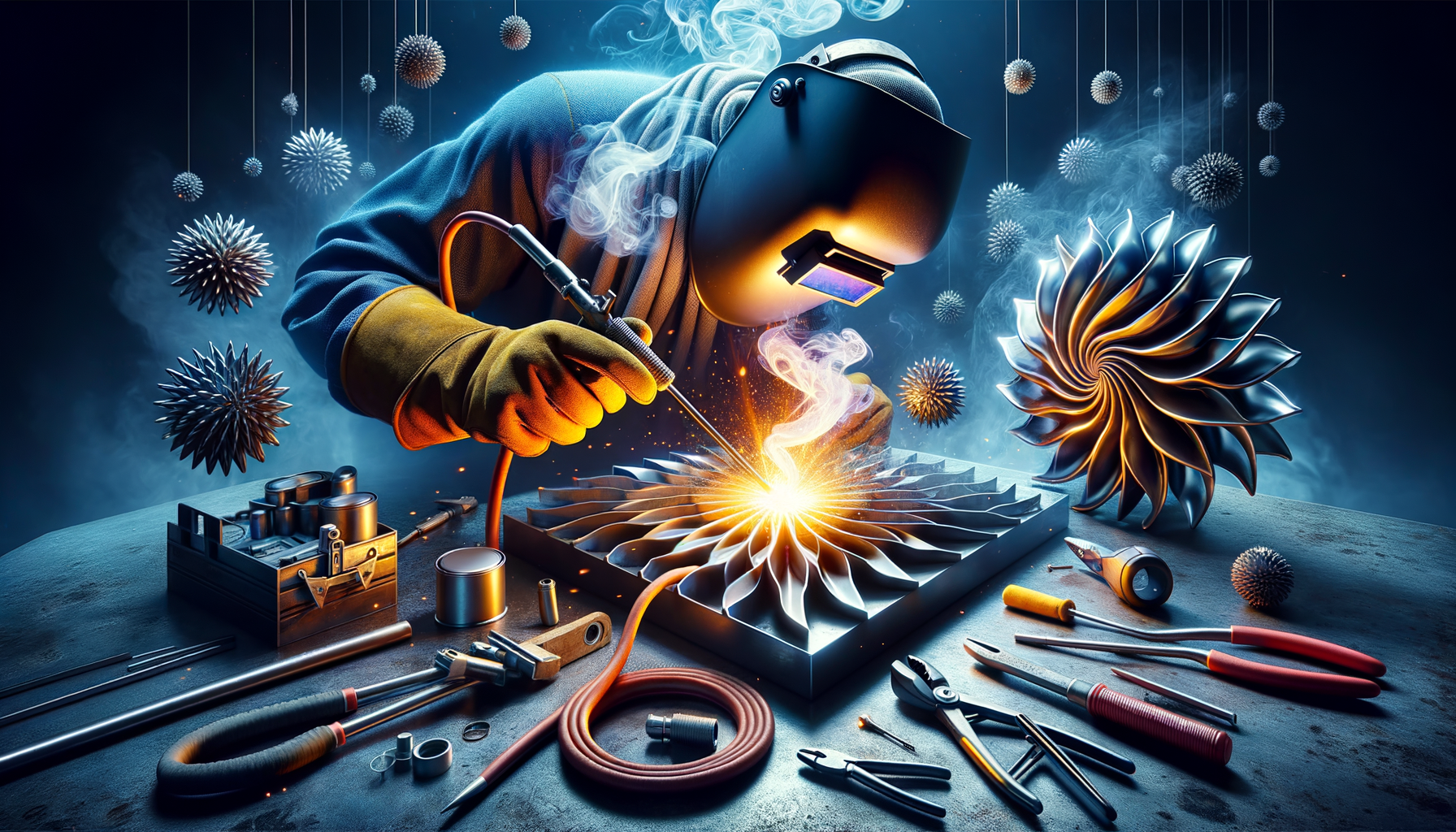The Science Behind the Spark
Welding, at its core, is a process that involves the fusion of materials, typically metals, by applying heat. However, the science behind this spark is far more intricate than it appears. The process can be broken down into several core methods: arc welding, MIG (Metal Inert Gas) welding, TIG (Tungsten Inert Gas) welding, and more. Each of these methods employs different techniques and equipment, tailored to specific types of materials and desired outcomes.
Arc welding, for instance, uses an electric arc to melt the metals at the welding point. This method is renowned for its efficiency and is commonly used in heavy industries such as construction and manufacturing. On the other hand, MIG welding, which uses a continuous wire feed as an electrode, is favored for its versatility and ease of use, making it suitable for both thin and thick materials.
Understanding the science behind these methods involves delving into the principles of thermodynamics and metallurgy. The heat generated during welding causes changes in the microstructure of metals, affecting their strength and durability. Welders must have a grasp of these scientific principles to ensure the integrity of the welds they produce. This scientific foundation is what elevates welding from a simple craft to a complex, technical profession.
The Art of Precision
While welding is grounded in science, it is equally an art form, requiring precision and skill. A welder’s ability to control the welding torch, maintain the right angle, and adjust the speed of welding are all crucial to achieving a flawless weld. This precision is not just about aesthetics; it directly impacts the strength and longevity of the welded structure.
Consider the delicate process of TIG welding, which is often used for its clean and precise welds. This method requires a steady hand and a keen eye, as the welder must manually feed the filler material into the weld pool. The technique demands a high level of concentration and control, akin to a painter meticulously applying strokes on a canvas.
Moreover, precision in welding extends to understanding and applying the correct settings on welding machines. Welders must adjust parameters such as voltage, current, and gas flow to suit the specific materials and thicknesses they are working with. This attention to detail ensures that the welds are not only visually appealing but also structurally sound.
The Hidden Hazards
Welding, despite its many benefits, comes with its share of hazards. Welders are exposed to intense heat, harmful fumes, and the risk of electric shock. Understanding these risks and implementing safety measures is crucial for anyone in the welding profession.
One of the primary hazards is exposure to ultraviolet and infrared radiation, which can cause severe eye damage, commonly known as “welder’s flash.” To mitigate this risk, welders wear specialized helmets with darkened lenses to protect their eyes from the intense light.
Additionally, the fumes generated during welding can contain harmful substances, including heavy metals and toxic gases. Proper ventilation and the use of respiratory protection are essential to prevent respiratory issues. Welders are also trained to recognize and manage the risk of fire and explosion, especially when working in confined spaces or with flammable materials.
Understanding and respecting these hazards is a critical aspect of welding, emphasizing the importance of safety training and awareness in the profession.
Technological Advancements in Welding
The field of welding is continuously evolving, with technological advancements playing a significant role in shaping its future. Automation and robotics have transformed traditional welding practices, offering increased precision and efficiency.
Robotic welding systems are now commonplace in industries that require high-volume production. These systems are capable of performing repetitive welding tasks with remarkable accuracy, reducing the need for manual intervention. This not only enhances productivity but also minimizes the risk of human error.
Furthermore, advancements in materials technology have expanded the range of materials that can be welded. High-strength steels and exotic alloys, once challenging to weld, are now more accessible thanks to innovations in welding techniques and equipment.
The integration of digital technology has also facilitated the monitoring and control of welding processes. Welders can now use software to program welding parameters, track performance, and ensure quality control. These technological advancements are paving the way for a more efficient and precise welding industry.
The Future of Welding: Skills and Opportunities
As welding technology continues to advance, the demand for skilled welders remains strong. The profession offers a wide range of opportunities, from traditional roles in construction and manufacturing to emerging fields such as aerospace and renewable energy.
Welders with expertise in advanced techniques, such as laser welding and friction stir welding, are particularly sought after. These specialized skills open doors to high-tech industries that require precision and innovation.
Moreover, the global focus on sustainable practices has led to an increased demand for welders in the renewable energy sector. From constructing wind turbines to assembling solar panels, welders play a crucial role in building the infrastructure needed for a sustainable future.
For those considering a career in welding, continuous learning and adaptation to new technologies are key. Training programs and certifications provide welders with the knowledge and skills needed to stay competitive in this dynamic field.
The future of welding is bright, with endless possibilities for those willing to embrace the challenges and opportunities that come with this ever-evolving profession.








